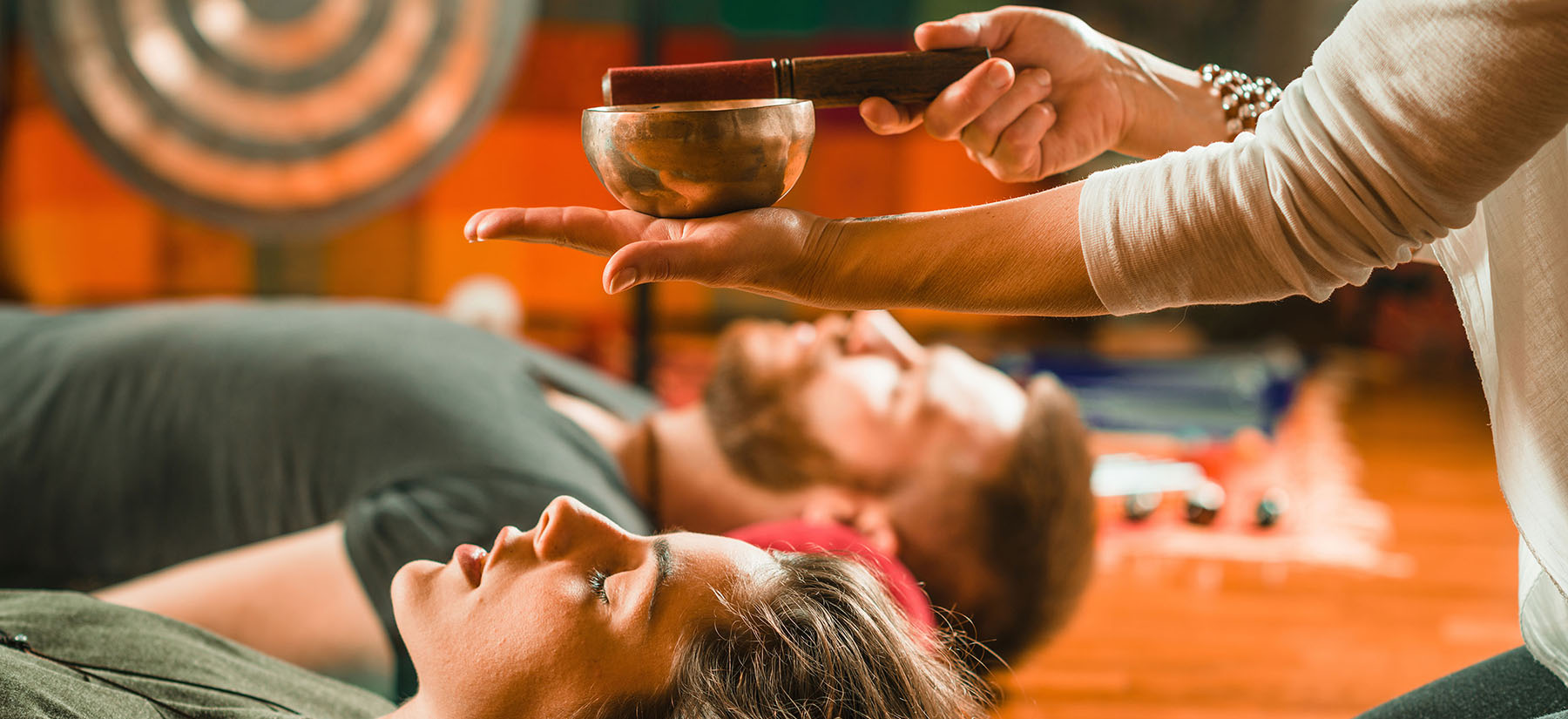Perhaps one silver lining to the past years of upset and unrest is the societal turn to therapy and self-care routines as a smart and responsible way to deal with stress. Besides talking to licensed professionals, people are finding new ways to find inner calm and maintain their mental health. A new trend emerging in the therapy scene is actually centuries old—sound therapy has been used in different cultures as a healing technique, such as by Tibetan Monks who use the deep vibrations of Tibetan singing bowls to relieve stress and other ailments. Now, sound therapy “healers” can guide you through a sound healing session to help you relax and unwind.
What Is Sound Therapy?
While you might agree that listening to relaxing music or a good song can change your mood, sound therapy goes a bit deeper. The practice uses vibrations to interact with different parts of your body in order to relax muscles and create emotional balance. Technically, your brainwaves are supposed to match the sound waves, bringing your mind in a dreamy state. This can be done via a chant, a singing bowl, a tuning fork, or with sounds through headphones. Often, when done with a professional, the experience is called a “sound bath,” and you can expect to lie down, close your eyes, and experience overlapping waves of sound that are supposed to bring you into a deeper state of contemplation or relaxation. This is different from music therapy, which is a type of cognitive therapy that includes music conducted by a licensed clinician.
“Sound Healing allows us to resonate to higher frequency by using the law of resonance, and by matching our vibrational signature to the fundamental tone of the universe, the creative power of all that grows, and all that breathes.” —Philippe Garnier, Académie de Sonothérapie
Does it Really Work?
While many sound healers and celebrities (such as Robert Downey Jr. and Meghan Markle) claim that sound therapy has physical effects such as lowering blood pressure, improving circulation, reducing respiratory rates, and increasing energy, scientific studies say that sound vibrations don’t heal much at all. However, sound baths are simply another form of meditation, which can definitely help with relaxation and mental well-being.
What many people like about sound baths is that it is quite passive. You don’t have to do anything but lie down while the sound vibrations push you to a deeper state of Zen more quickly than relaxing or trying to meditate on your own. Some individuals feel like it is the easiest way for them to clear their minds and relax, which has a positive effect on overall well-being.
How Do You Take a Sound Bath?
The most popular way to experience a sound bath is to visit a studio much like you would for a yoga session and your local yoga studio is the first place you look. As the trend is becoming more popular, a quick Google search will almost definitely reveal sound bath sessions in your area. Go into your first session understanding that it may take you a while to unwind, but the main idea is to do nothing—simply relax and be washed away in the sound waves.







